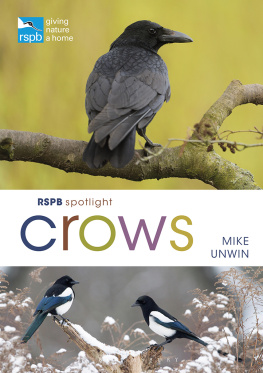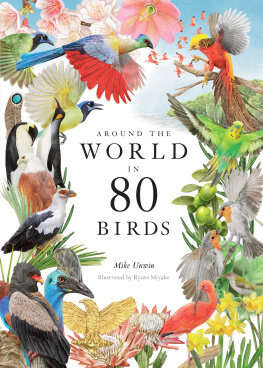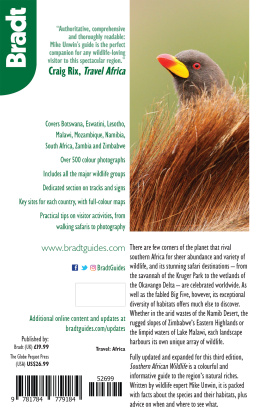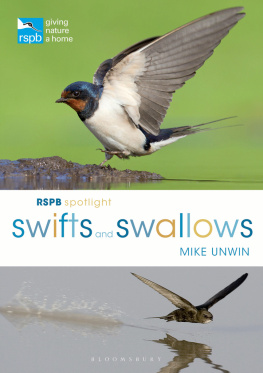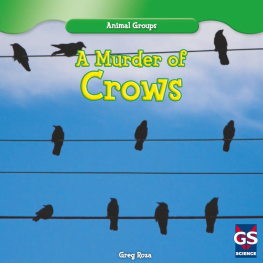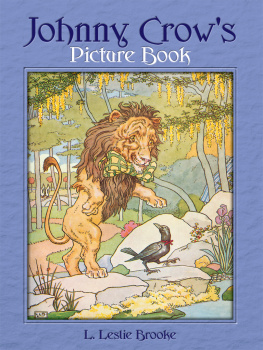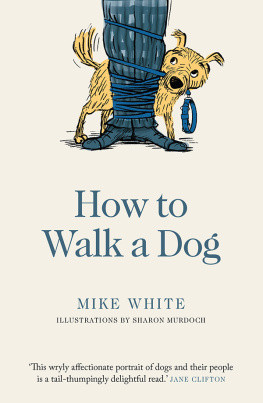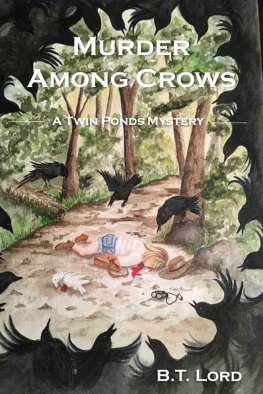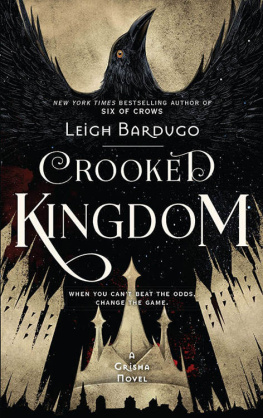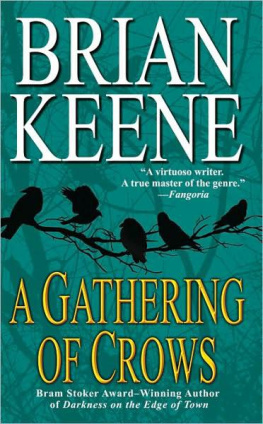Mike Unwin - Crows
Here you can read online Mike Unwin - Crows full text of the book (entire story) in english for free. Download pdf and epub, get meaning, cover and reviews about this ebook. year: 2021, genre: Home and family. Description of the work, (preface) as well as reviews are available. Best literature library LitArk.com created for fans of good reading and offers a wide selection of genres:
Romance novel
Science fiction
Adventure
Detective
Science
History
Home and family
Prose
Art
Politics
Computer
Non-fiction
Religion
Business
Children
Humor
Choose a favorite category and find really read worthwhile books. Enjoy immersion in the world of imagination, feel the emotions of the characters or learn something new for yourself, make an fascinating discovery.
- Book:Crows
- Author:
- Genre:
- Year:2021
- Rating:3 / 5
- Favourites:Add to favourites
- Your mark:
- 60
- 1
- 2
- 3
- 4
- 5
Crows: summary, description and annotation
We offer to read an annotation, description, summary or preface (depends on what the author of the book "Crows" wrote himself). If you haven't found the necessary information about the book — write in the comments, we will try to find it.
Crows — read online for free the complete book (whole text) full work
Below is the text of the book, divided by pages. System saving the place of the last page read, allows you to conveniently read the book "Crows" online for free, without having to search again every time where you left off. Put a bookmark, and you can go to the page where you finished reading at any time.
Font size:
Interval:
Bookmark:


BLOOMSBURY WILDLIFE
Bloomsbury Publishing Plc
50 Bedford Square, London, WC1B 3DP, UK
This electronic edition published in 2021 by Bloomsbury Publishing Plc
BLOOMSBURY, BLOOMSBURY WILDLIFE and the Diana logo are trademarks of Bloomsbury Publishing Plc
First published in the United Kingdom, 2021
Copyright Mike Unwin, 2021
Copyright 2021 photographs and illustrations as credited .
Mike Unwin has asserted his rights under the Copyright, Design and Patents Act, 1988, to be identified as Author of this work
For legal purposes the constitute an extension of this copyright page
All rights reserved
You may not copy, distribute, transmit, reproduce or otherwise make available this publication (or any part of it) in any form, or by any means (including without limitation electronic, digital, optical, mechanical, photocopying, printing, recording or otherwise), without the prior written permission of the publisher. Any person who does any unauthorised act in relation to this publication may be liable to criminal prosecution and civil claims for damages.
A catalogue record for this book is available from the British Library
Library of Congress Cataloguing-in-Publication data has been applied for
ISBN: 978-1-4729-7177-7 (PB)
ISBN: 978-1-4729-7176-0 (eBook)
ISBN: 978-1-4729-7175-3 (ePDF)
Design by Susan McIntyre
Maps and illustrations by Julian Baker
To find out more about our authors and their books please visit www.bloomsbury.com where you will find extracts, author interviews and details of forthcoming events, and to be the first to hear about latest releases and special offers, sign up for our newsletters.

Published under licence from RSPB Sales Limited to raise awareness of the RSPB (charity registration in England and Wales no 207076 and Scotland no SC037654).
For all licensed products sold by Bloomsbury Publishing Limited, Bloomsbury Publishing Limited will donate a minimum of 2% from all sales to RSPB Sales Ltd, which gives all of its distributable profits through Gift Aid to the RSPB.
Contents


The black plumage, intelligent eyes and formidable bill of a Raven exemplify all that people most admire and most fear in corvids.
Love em or hate em, you certainly cant miss em. The crows include some of Britains best-known, most abundant and most opinion-dividing birds. Clad mostly in black (with a couple of notable exceptions), they have a conspicuous appearance, which along with their confident habits and raucous voices makes them instantly identifiable. Sadly, familiarity can breed contempt: in towns, we tend to overlook crows as just part of the urban furniture; in the country, we have long accused them of damaging crops and harming livestock. In short, crows have an image problem and this is unfortunate, as few birds are more rewarding of our attention.
What makes a crow?
The crow family is classified by scientists as the Corvidae and its members are known as corvids. As well as crows themselves, corvids include ravens, jackdaws, magpies, jays, choughs and other related species around the world. Many have a particularly close relationship with humans. Living alongside us, they have cemented themselves deeply within our culture, generating myths and folklore that are hundreds, or even thousands, of years old: for proof of this you need only look at our language, which is littered with expressions such as scarecrow and raven-haired. As we have modified our landscapes over the centuries, clearing forests and building towns and roads, many corvids have taken advantage of the new opportunities, displaying a resourcefulness that allows them to thrive where most other birds decline.
Scientists who study corvids have discovered that these birds are among the most intelligent creatures on our planet. Indeed, their brain-to-body size ratio is the equal of any in the animal kingdom other than humans. In addition to their advanced capacity for tool use, problem solving, vocal communication and other skills, their behaviour also ).

Carrion Crows adapt from an early age to the human environment.
Given these remarkable qualities, you might presume that corvids belong to some separate, higher order of birds. In fact, they belong to the Passeriformes, the same order as thrushes, sparrows, finches, warblers and many other families of small bird known collectively as passerines. Corvids are bigger than most of these relatives, however, with nearly all species being dove-sized or larger. Indeed, the Raven (Corvus corax) is bigger than a Common Buzzard (Buteo buteo) and is the largest of all the worlds passerines. Other features typical of corvids are their largely monochromatic plumage most temperate species are either all black or black and white; the long wings of most species, adapted for powerful, agile flight; and a covering of fine feathers over their nostrils.
The success and intelligence of corvids come as part and parcel of their versatile lifestyle. These birds are generalists. In other words, rather than being adapted to specialise in feeding on a particular food like finches with seeds, say, or swallows with flying insects their robust, all-purpose bill allows them to enjoy a broad, omnivorous diet. This means they can adapt to a wide variety of food sources and can continue to adapt as their environment changes around them, using their intelligence to exploit whatever new feeding opportunities arise.

This opportunistic Hooded Crow has captured a fish.
It is crows appetites that largely explains the bad press they receive. In farmland, species such as Rooks (Corvus frugilegus) may gather in large numbers to feed on cereal crops, which does not endear them to some farmers although the birds also hoover up agricultural pests in the process. During the breeding season, species such as Carrion Crows (Corvus corone) and Magpies (Pica pica) also turn predator on eggs and nestlings, which does not go down well with some gamekeepers, nor with lovers of garden birds. Meanwhile, many people find the appetite of corvids for roadkill and other carrion unappealing even though, like all scavengers, they provide an invaluable natural clean-up service. The birds reputation was not enhanced in bygone days when, during times of war and disease, human corpses were also sometimes on the menu.
Feeding, however, also illustrates some of the most impressive qualities of crows. These include a variety of problem-solving techniques, including using a selection of tools and in some cases even fashioning their own. Many species, notably Jays (
Font size:
Interval:
Bookmark:
Similar books «Crows»
Look at similar books to Crows. We have selected literature similar in name and meaning in the hope of providing readers with more options to find new, interesting, not yet read works.
Discussion, reviews of the book Crows and just readers' own opinions. Leave your comments, write what you think about the work, its meaning or the main characters. Specify what exactly you liked and what you didn't like, and why you think so.

